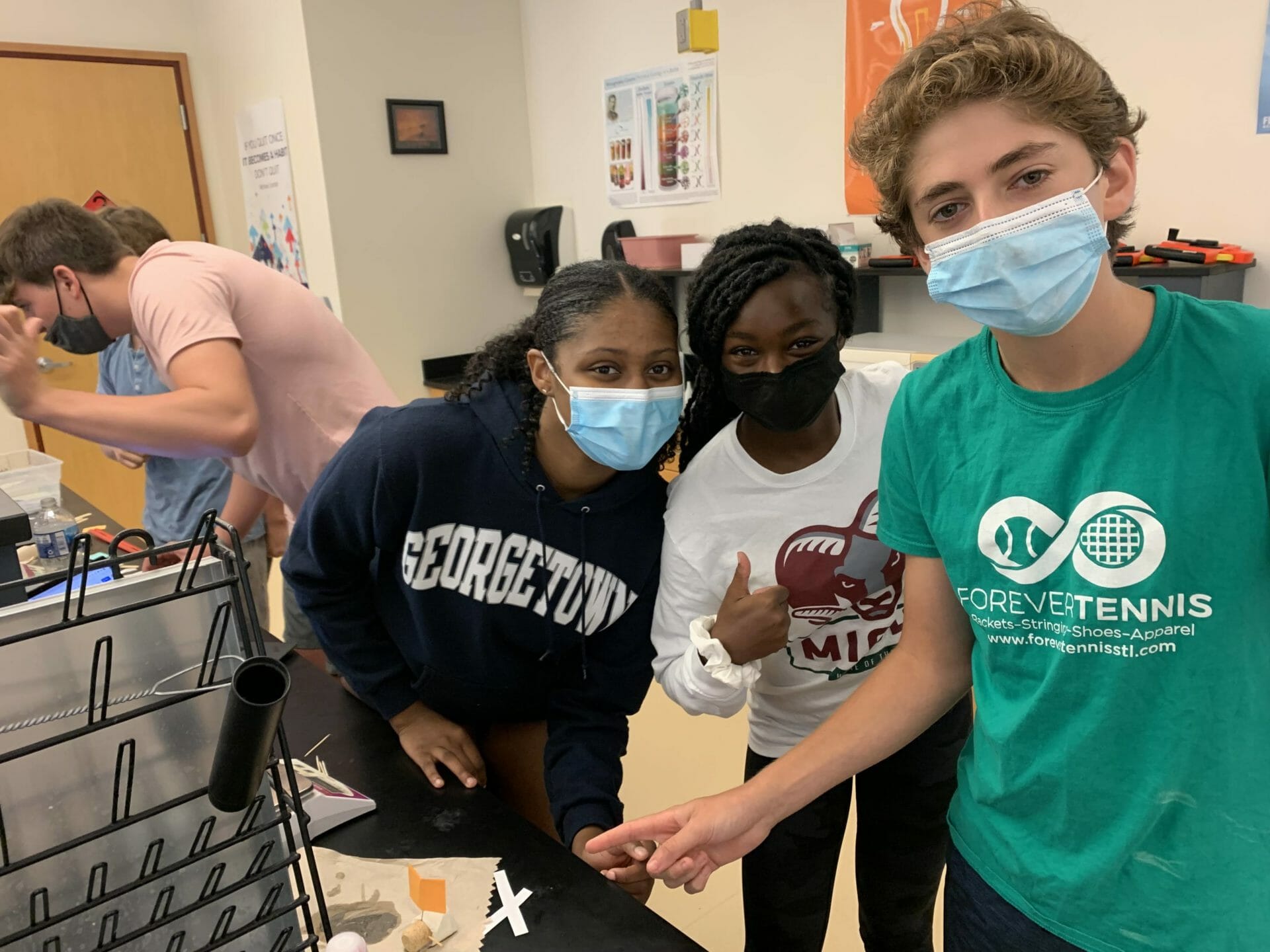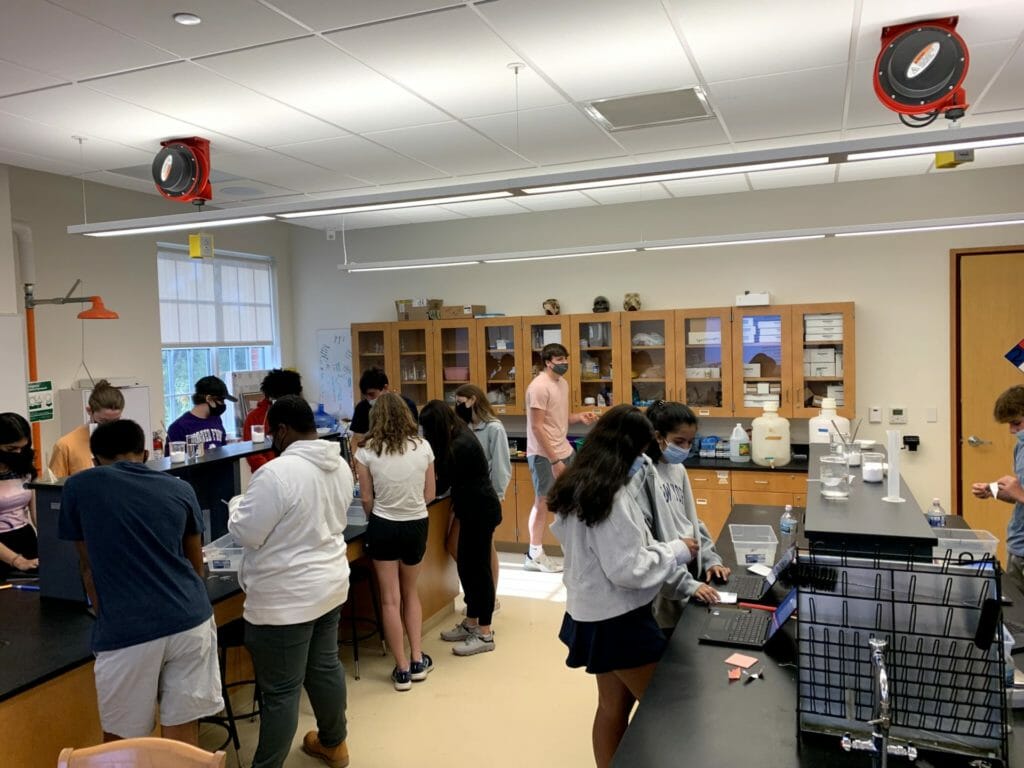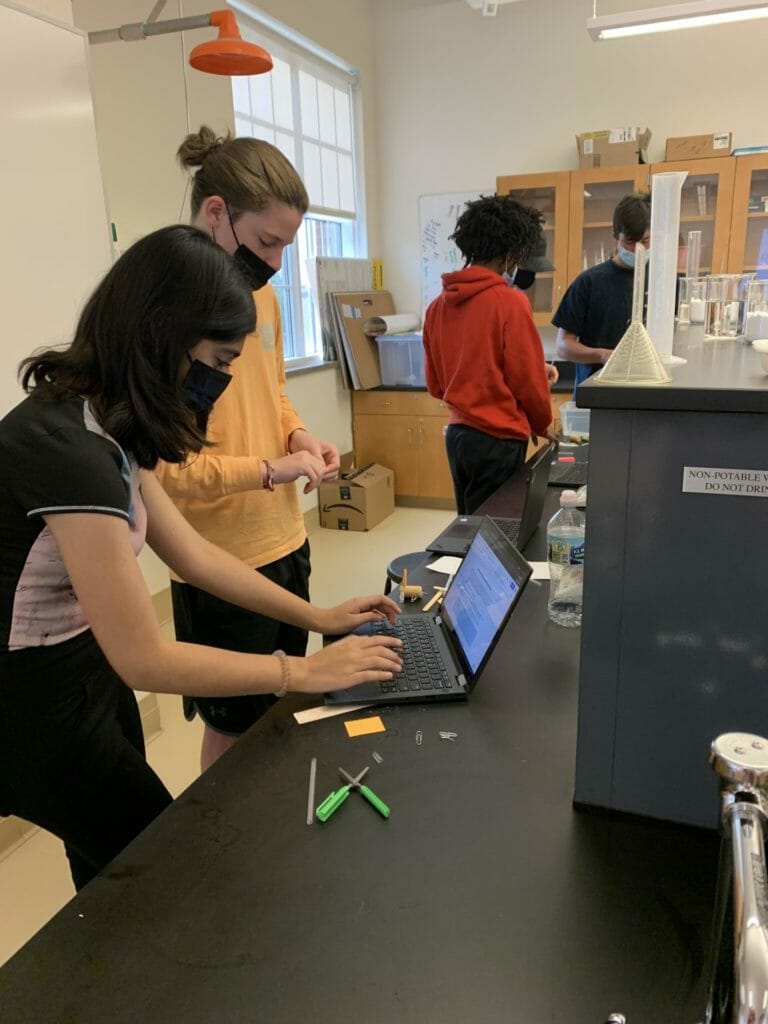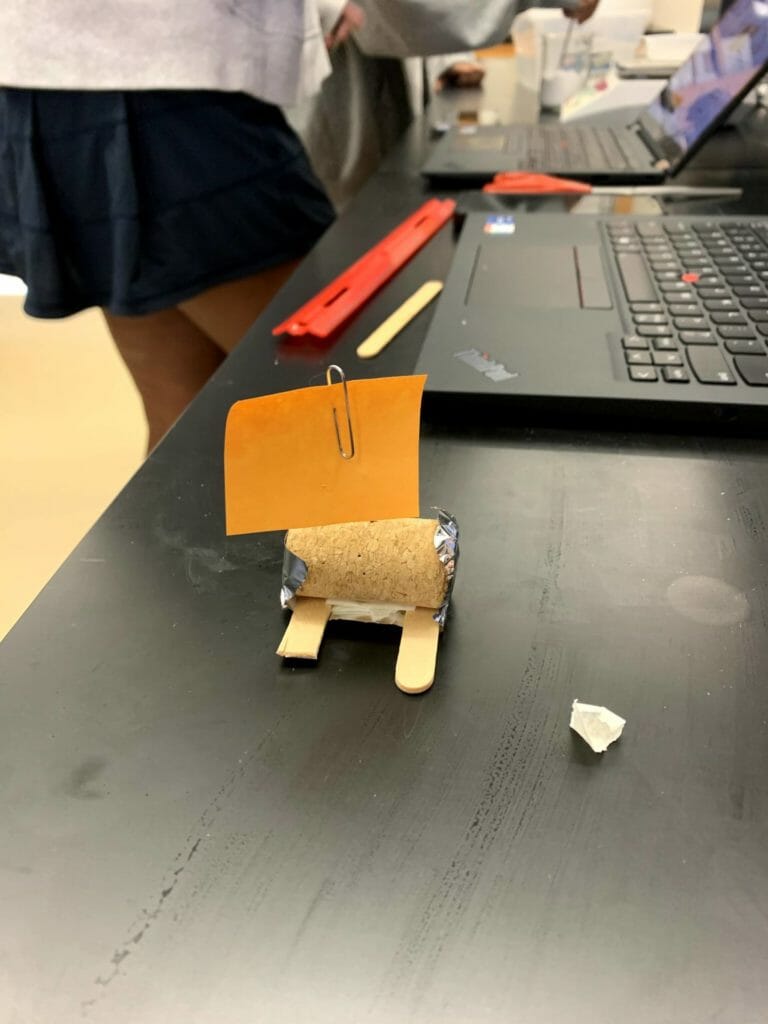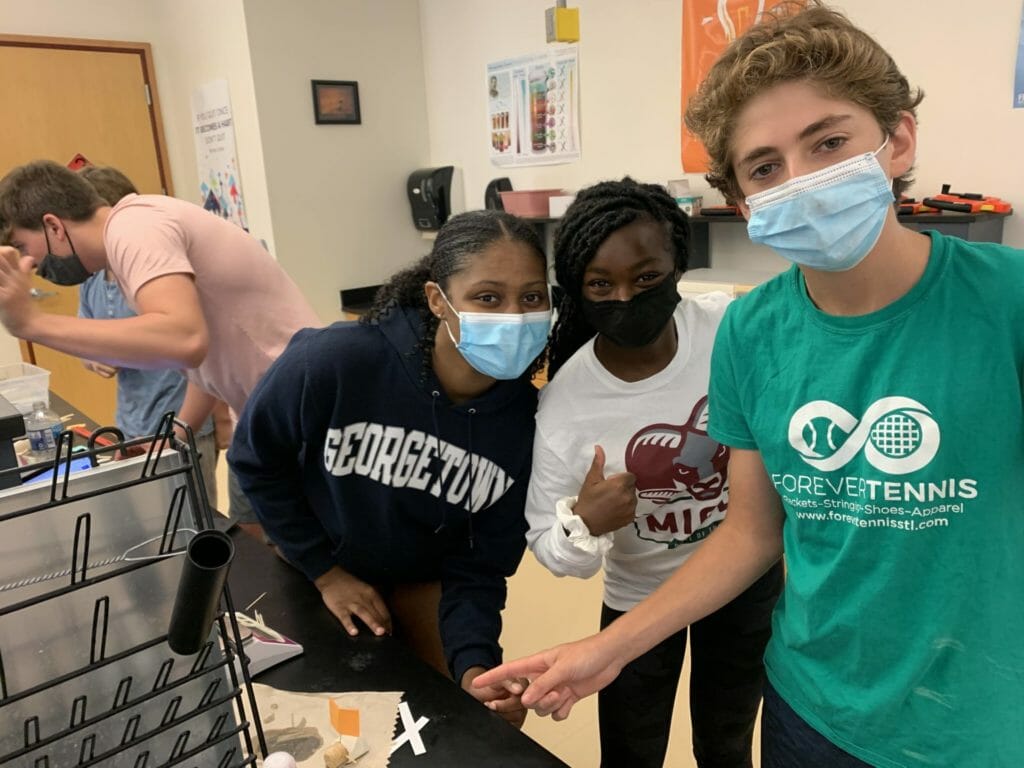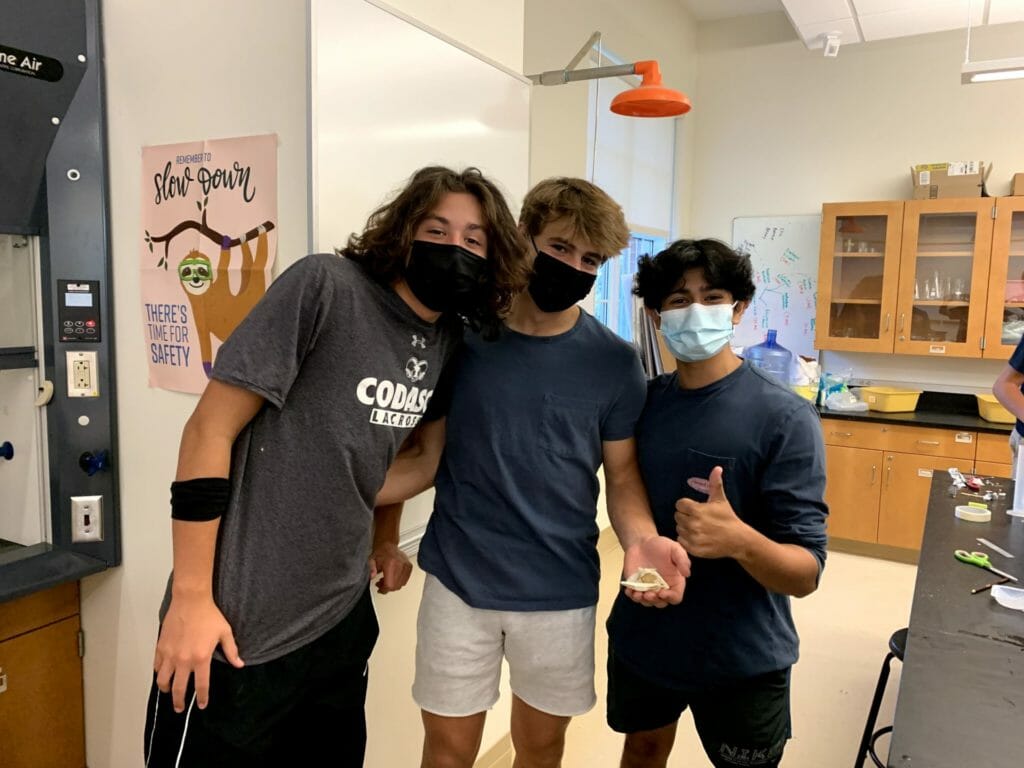If you’re piloting a sailboat out on the open water, you’ll rely on the wind. What happens if your vessel is tiny and confined to a body of water inside a six-quart bin? Well, as our Science 10 students learned last week, you’ll have to produce your own propellent.
In this creative engineering challenge, student teams first constructed their “sailboats” from corks, sticky notes, paperclips, toothpicks, drinking straws, popsicle sticks, card stock, aluminum foil, masking tape, and molding clay, and had to meet measurement constraints. The goal was to propel their “buoyant corkomodules” across water using CO2 produced by an acid-base reaction.
The “race” included rules, such as the modules could not become airborne, could not sink, could not touch the edge of the bin, and had to travel its distance in one attempt (by a single gas expellant). Reagent quantities were limited to 50mL of acetic acid and 5 grams of sodium bicarbonate.
Students learned that it is sometimes possible to tell that a chemical reaction has occurred by observation of the newly formed products and their new chemical properties. The evolution of a gas is one of several possible results of a chemical reaction. A gas evolution reaction is any chemical reaction that results in the production of gas such as oxygen or carbon dioxide.
After constructing their corkomodules and having them certified by a teacher, the intrepid engineers set sail across the six-quart bins. They carefully lined up their watercraft at one end of the bin and then created propellant via a chemical reaction, releasing the CO2 into the sails to move them across the water.
„This is one of my favorite lessons in Science 10,“ said Kelly Anderson, Upper School Science Teacher. „I get to see students act as real scientists/engineers in a low-risk setting as we were more focused on their skill development rather than their success. I thoroughly enjoyed watching students learn from each trial as they made adjustments to make the ‚best‘ corkomodule. It was exciting to watch students‘ creativity and healthy competition shine as they demonstrated their content knowledge in an alternative way.“
Students practiced their skills of both design and communication of information/results, allowing them to focus more on creativity and learning rather than the success of their boat. This similar chemical reaction and engineering skillset will be used to develop fire extinguishers, the culmination of this first unit in 10th grade science.
Congratulations to our engineer sailors for successfully sailing the open waters of the STEM building labs!
